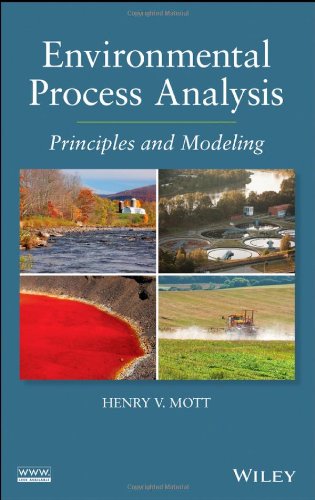

Most ebook files are in PDF format, so you can easily read them using various software such as Foxit Reader or directly on the Google Chrome browser.
Some ebook files are released by publishers in other formats such as .awz, .mobi, .epub, .fb2, etc. You may need to install specific software to read these formats on mobile/PC, such as Calibre.
Please read the tutorial at this link. https://ebooknice.com/page/post?id=faq
We offer FREE conversion to the popular formats you request; however, this may take some time. Therefore, right after payment, please email us, and we will try to provide the service as quickly as possible.
For some exceptional file formats or broken links (if any), please refrain from opening any disputes. Instead, email us first, and we will try to assist within a maximum of 6 hours.
EbookNice Team

Status:
Available0.0
0 reviewsEnables readers to apply core principles of environmental engineering to analyze environmental systems
Environmental Process Analysis takes a unique approach, applying mathematical and numerical process modeling within the context of both natural and engineered environmental systems. Readers master core principles of natural and engineering science such as chemical equilibria, reaction kinetics, ideal and non-ideal reactor theory, and mass accounting by performing practical real-world analyses. As they progress through the text, readers will have the opportunity to analyze a broad range of environmental processes and systems, including water and wastewater treatment, surface mining, agriculture, landfills, subsurface saturated and unsaturated porous media, aqueous and marine sediments, surface waters, and atmospheric moisture.
The text begins with an examination of water, core definitions, and a review of important chemical principles. It then progressively builds upon this base with applications of Henry's law, acid/base equilibria, and reactions in ideal reactors. Finally, the text addresses reactions in non-ideal reactors and advanced applications of acid/base equilibria, complexation and solubility/dissolution equilibria, and oxidation/reduction equilibria.
Several tools are provided to fully engage readers in mastering new concepts and then applying them in practice, including:
Environmental Process Analysis serves as a bridge between introductory environmental engineering textbooks and hands-on environmental engineering practice. By learning how to mathematically and numerically model environmental processes and systems, readers will also come to better understand the underlying connections among the various models, concepts, and systems.Content:
Chapter 1 Introductory Remarks (pages 1–10):
Chapter 2 Water (pages 11–15):
Chapter 3 Concentration Units for Gases, Liquids, and Solids (pages 16–35):
Chapter 4 The Law of Mass Action and Chemical Equilibria (pages 36–43):
Chapter 5 Air/Water Distribution (pages 44–63):
Chapter 6 Acid/Base Component Distributions (pages 64–118):
Chapter 7 Mass Balance, Ideal Reactors, and Mixing (pages 119–156):
Chapter 8 Reactions in Ideal Reactors (pages 157–264):
Chapter 9 Reactions in Nonideal Reactors (pages 265–334):
Chapter 10 Acid‐Base Advanced Principles (pages 335–438):
Chapter 11 Metal Complexation and Solubility (pages 439–518):
Chapter 12 Oxidation and Reduction (pages 519–570):